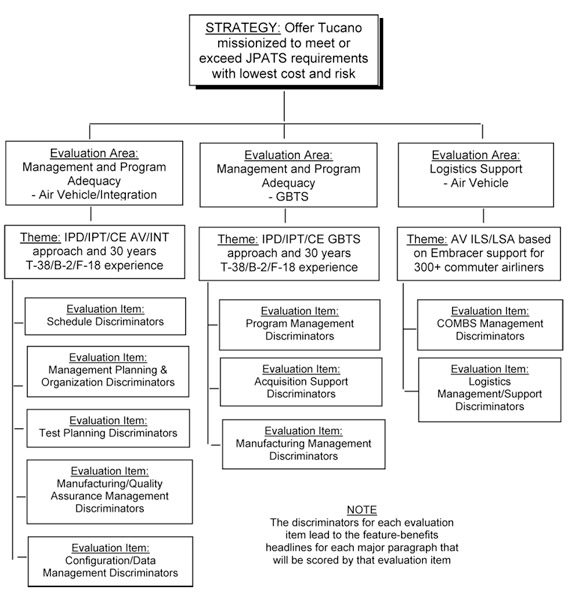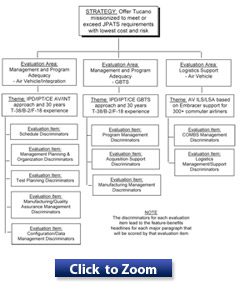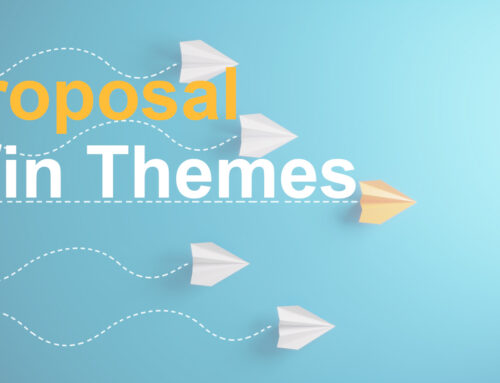Creating a winning federal proposal strategy can be challenging. In theory teams must create persuasive and winning proposals. But how do you get there? Try a strategy-theme-discriminator tree on your next proposal to help your proposal stand out from competitors.
Study the RFP Evaluation Factors
To develop your S-T-D Tree, study the RFP Evaluation Factors, and identify your customer’s evaluation areas, items, factors, and subfactors. The subfactors might not be spelled out, so you may have to determine these lower level evaluation considerations from the RFP evaluation descriptions.
Tree Structure
Next, organize them into the S-T-D Tree structure. Note that the top-level Strategy will be essentially your “Mission Statement” for this federal proposal. If your objective for bidding is other than winning, such as just to introduce the customer to your capabilities for future business, this is where you would make that statement.
Next, under each RFP evaluation area (i.e., Technical, Management, Logistics, etc.) enter your Theme that you will substantiate by the following text. Be sure to tie your Theme to your customer’s reason for buying this product or service—if you can’t relate your Theme to your customer’s solicitation objective, you don’t have a winning theme because he won’t care. Ideally this should be a discriminator. Discriminators are features of your offering that benefit your customer in ways that your competitors do not. Your Theme should therefore show your Features-Benefits relationship. It should be unique to you, important to your customer, and one that you can convince your customer that you can and will deliver at an acceptable cost.
Define Headlines
Finally, define the headlines that you will show at the start of each major proposal section (shown as “Evaluation Items” in the chart). Headlines, sometimes called “Theme Statements,” summarize the points you want to make in that section. I like to show them immediately following the paragraph number and title, italicized, centered, and boxed, in order to set them apart. It should be no longer than 30 words or so, and the shorter the better. It should be factual—in other words, not “we understand the problem, or “our offering will solve your problem.”
TIP: If you can use the form: “Our Widget reduces maintenance costs because….” This will be very powerful.
You should also use headlines after each numbered proposal paragraph. Headlines are very effective because they call the evaluators’ attention to your discriminators, features, and benefits when they first skim your proposal. Be sure, however, to fully substantiate your headline claims in the following text and illustrations. You will probably fine tune your headlines after the text is written.
These top-level statements are also effective in your Executive Summary because they call attention to your discriminators and relate them to your customer’s solicitation objectives.







Leave A Comment